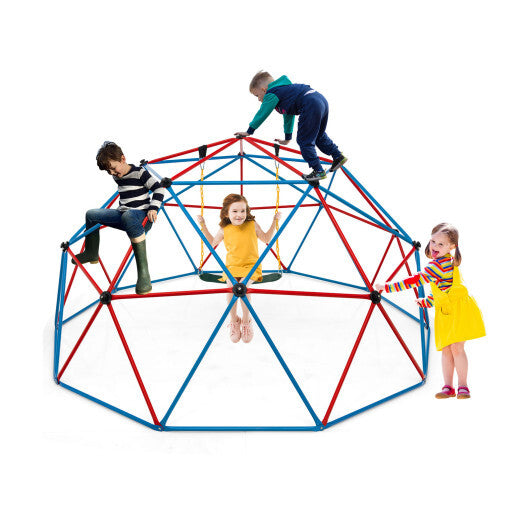Here’s the thing about high need kids: from the time they’re little babies, they tend to get 100% focused in on what they want (or don’t want).
As infants, they’ll cry and scream relentlessly until they’re picked up, fed, changed, or until their needs are met.
As young babies, we obviously want to meet those needs pretty quickly – both because we want to build trust, and because we can’t stand to hear the crying!
But as our child starts to get a little older and we move into meltdown (aka tantrum) territory, there will be times when it’s not a NEED they’re screaming about, but more of a desperate WANT for something.
For instance, when they want to:
- play with your phone
- have that candy in the checkout aisle
- be carried but your back can’t take another minute of it
- climb on the kitchen table
With more easygoing kids, often offering a simple redirection or distraction is enough. For instance, you could take the phone from your little one’s hand, offer a book in its place, and a minute later all would be well.
But because high need kids tend to be so persistent, these types of distraction often won’t be enough.
For instance, if you took the phone away and replaced it with something else, often the result would be a full-on meltdown.
And THIS is why it’s so hard to be consistent as the parent of a high need child!
To help you come up with ideas for distracting your older high need baby, toddler or preschooler, I’ve put together this pdf checklist of 12 distraction strategies.
Feel free to keep it on your phone or print it out and keep it on your fridge…it’s nice to have something to consult in the heat of the moment!
How to use this distraction checklist
You might look at this list and think, “There’s no way these will work for my high need child!”.
However, HOW you use these strategies is just as important (or even more important) if you want them to be effective. So here are 3 tips for using these strategies effectively with high need kids:
- Stay calm, gentle and firm. High need and spirited kids are known for being the emotional barometers of our homes. Because they tend to be so sensitive and intuitive, they feed off our feelings…especially our negative ones. To distract your child from his BIG feelings, you need to manage your OWN big feelings first!
- Match your child’s level of intensity, but in a positive way. Have you ever noticed that when your child is fussing or crying and someone else walks into the room, the crying often stops immediately? I believe this is because that new person is bringing some fresh, positive energy. When you need to distract your child, muster up as much energy as you can, put a smile on your face, and only THEN move their attention elsewhere.
- Avoiding using threats or “no’s”. High need kids tend to be very sensitive to being told no. And threatening them with consequences may stop the behavior, but I guarantee it WON’T stop a meltdown…in fact, you’ll probably get an even bigger one! Instead of simply saying “No, don’t touch that”, or “No, you can’t have a cookie”, look for yesses: for instance, “Sure, you can have a cookie after you finish your apple”, or “I love that you want to climb! Let’s go do that in the backyard (instead of the kitchen table!).
12 ways to distract your high need child (to avoid or stop a meltdown)
These strategies can come in handy in a variety of situations: when your child is engaged in an activity you want him to stop, when he’s headed toward a meltdown or when he’s IN the middle of a meltdown.
- Ask her for help: Request her help with a task. E.g., “I really need your help washing the dishes…can you squirt this soap into the sink?”
- Offer a favorite toy: This works best if you also play with it with them. For times when your child predictably meltdowns down (e.g., during diaper changes), have a special, usually “off limits” toys handy.
- Ask them to blow your hair: This is a unique one I’ve heard. Ask your child to blow your hair out of your face. It’s hard to scream or cry when you’re too busy blowing!
- Tickle or play-wrestle: This was the one we mainly used with Sammy. This will make some kids even more upset, so watch how your child responds.
- Use a silly voice: This works by being so absurd that it shocks them and distracts them from their big feelings.
- Use lots of energy: As mentioned above, these tips will often only work if you use LOTS of energy!
- Leave the room room briefly: If your child is in a safe place and you feel like your presence is only prolonging the meltdown, casually mention that you need to go check the washing machine, use the restroom or feed the dog.
- Look out the window: With lots of energy, draw their attention to something outside (“Wow, I just noticed there’s a big bird in that tree!!”).
- Don’t use reason: When little ones are hyper-focused on their big feelings, they may be literally unable to hear or process logic or reason. In fact, even calm reasoning can end up making them more upset.
- Give a choice: If you sense a meltdown coming on, offer a choice (e.g., “Would you like this book or this doll?”). When your child inevitably offers a third choice, “I want your phone”, consider if there are any creative ways you can compromise (for instance, “Sure, we can use my phone together for 5 minutes, then we’ll play with your doll”).
- Name the feeling: This is a another tip that works better BEFORE a meltdown occurs. If you notice your child is starting to unravel, identify the emotion he or she may be feeling. Sometimes simply feeling understood can head off a meltdown at the pass.
- Move to another room. I find a change of scenery is often needed alongside each of the tips above. Moving to another area can provide its own distraction, making it more likely that the strategies above will work.




























